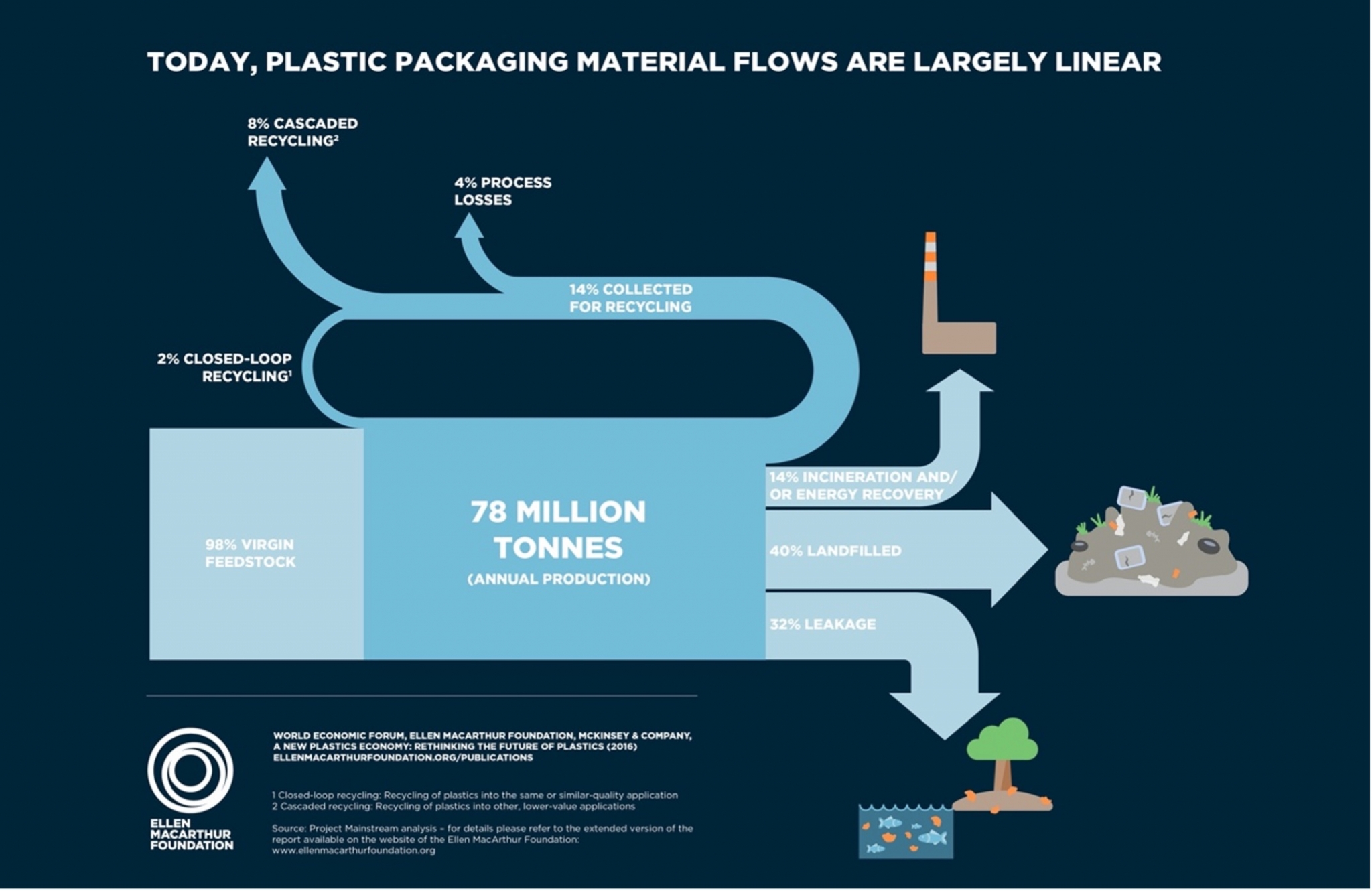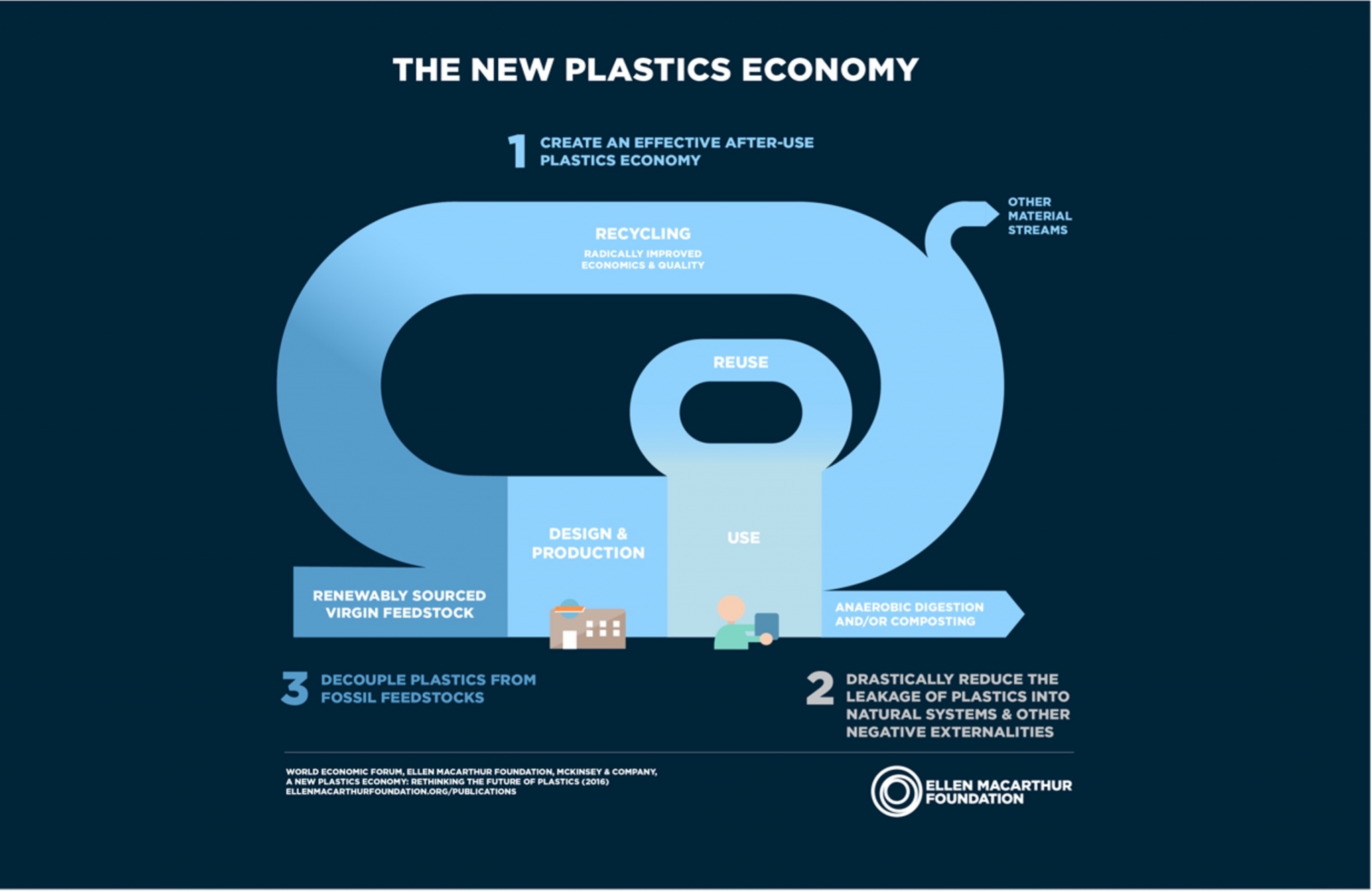The truth about plastic recycling
Posted: 17 February 2022
Recycling is great, isn't it? Everything we throw in the recycling bin will be picked up, sent to a factory, and out on the other side comes a new plastic bottle, as good as new! Well as you might have guessed with the title of this post, recycling is not at all that straightforward, especially when it comes to plastics. To clear it all up, we thought it good to present some of the misconceptions, the difficulties, and the solutions. So, strap in, because we’re about to recycle your knowledge!
Plastic is one of the most consumed materials in the modern world. Have you wondered what happens with all the plastic after we are done with it? While we have the knowledge and technology to take care of it properly, this does not happen enough. The Ellen MacArthur foundation released in 2016 an extensive report on how to apply the circular economy principles to the global plastics industry, called the New Plastics Economy. One of their findings showed that of the 78 million tons of annually produced plastic packaging, only 8% of this is actually recycled, with a mere 2% being recycled into a similar quality application. 40% goes to landfills, and 32% simply just leaks into the environment. This is a staggering figure, considering the common marketing of products being recyclable and the praise of recycling being one of the saviors of environmental waste.

So why does this happen? If we have the technology to recycle plastics, how come a third of it just leaks into the environment and a whopping 40% of end up in landfills? Well, this is where it gets complex. We still operate in a linear economy framework where the material is extracted, produced, and then discarded as waste. It is cheaper and less complicated than shifting to circular because the cost is put on someone else, the planet, and the future generations. The collection, sorting and actual recycling process all require energy and solid logistics to make the system run smoothly, making the whole process a separate industry in itself. To add to this complexity, plastics are not one single material but actually a group of several different materials that need to be separated before recycling. Because of the high costs of running recycling schemes, only the most common and economically feasible plastic types will be targeted for recycling, leaving many of them excluded. Most plastics cannot be recycled together because of their different properties, and if recycled together then the output can only be used for carpets, pipes, and other low-value products. Consumer behavior is another factor that plays into this. For a plastic product to even be eligible for collecting and recycling it must be placed in the plastic bin by the user. If you place a recyclable plastic bag in the general waste, it will never even make it to the recycling factory.
While showing the realities, the New Plastics Economy also presented what an ideal circular plastics system could look like. As seen in the figure below from the Ellen MacArthur Foundation, this transition consists of three main steps. The first one is creating an effective after-use plastics economy, meaning that the economic values, qualities, and uptake rates need to be radically improved. The second is reducing the leakage of plastics into the natural environment, which would consist of making plastic recycling an economically attractive business. Lastly, decoupling plastic from the fossil industry by moving towards renewable virgin sources would allow the plastics industry to remain relevant and make it a valuable investment for the future.
There are also some good initiatives being taken place to ensure the circularity of plastics. One such is PET bottle deposit schemes. A deposit fee is charged at the point of purchase and refunded to the purchaser when the bottle is returned via a specifically designed system. Thus, this scheme helps to capture materials for recycling, thereby facilitating the effective and efficient collection, reducing littering/material leakage, and enabling reuse or recycling, which in turn encourages higher quality, purer secondary material that is not contaminated with other material or chemical additives.
EU and national-level legislation are also playing a big role in curbing the amount of plastic packaging used. Plastic tax incorporation which places 0.8 Euro per Kg tax on non-recycled plastic waste and a single-use plastics ban is definitely minimizing the use of plastics.

To sum it all up, recycling is difficult. It is a complex process that requires numerous parts of society to work together. But it is also a key milestone in our road towards sustainability. Plastic packaging has changed the way we live, in many ways for the better, but we cannot ignore the consequences. By striving for a circular economy, as presented by the Ellen MacArthur Foundation, we can continue to enjoy the benefits, while still caring for our precious planet.
Sources:
The Ellen MacArthur Foundation, 2016. The New Plastics Economy
https://ellenmacarthurfoundation.org/the-new-plastics-economy-rethinking-the-future-of-plastics